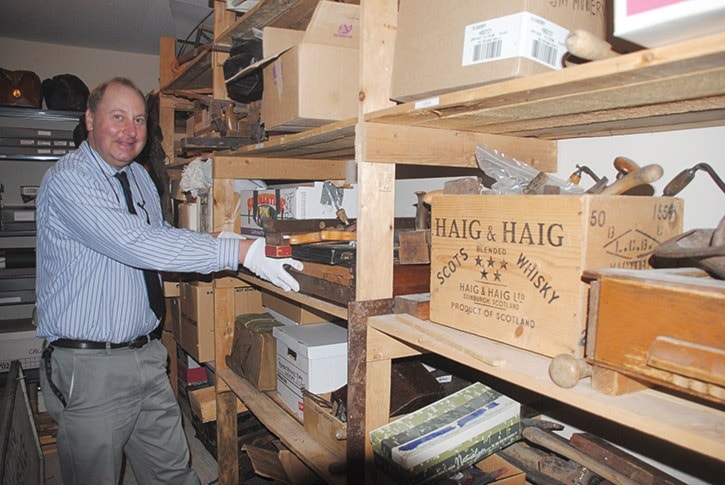Trenton Horsely
Special to the Tribune/Advisor
This year the Museum of the Cariboo Chilcotin is celebrating its 25th anniversary by hosting a heritage festival to commemorate its silver jubilee on Aug. 7 at the museum from 11 a.m. to 4 p.m. and in Boitanio Park from noon until 5:30 p.m.
There will be a variety of attractions, such as live music, featuring Tiller’s Folly, artisan demonstrations, traditional children’s games, local food vendors, an open house at the museum, as well as a commemorative plaque unveiling on the steps of the museum from 11 a.m. to 12 p.m.
While the purpose of museums is to preserve history, many people don’t know the stories of museums themselves, and the history of the Museum of the Cariboo Chilcotin is one worth sharing.
The origins of the Museum of the Cariboo Chilcotin date back to 1967 when as part of the centennial project a museum was constructed where the Andre’s Electronics building stands today.
The Williams Lake Museum and Historical Society was incorporated June 2, 1987. After being pushed out of this centennial building by the expansion of the tourist bureau, the museum society carried on with a goal to develop a formal museum in Williams Lake.
The museum society was given the use of the top floor of an old health unit building to repurpose into a museum in place of the centennial building.
The new museum officially opened its doors at 113 Fourth Avenue North on Aug. 7, 1991.
Since its opening, the museum has expanded into the downstairs of the building. The basement floor was renovated into another gallery, as well as storage spaces for artifacts and archival materials.
The increasing regional scope of the museum led it to take on Museum of the Cariboo Chilcotin as its operating name on Feb. 28, 1993 with the museum society only changing its name to Museum of the Cariboo Chilcotin Society on March 23, 2016, bringing the society’s name in line with the museum’s operating name.
When the museum opened its doors to the public in its current home it had very few artifacts to display.
Today, with the collection being close to 9,000 artifacts the museum has virtually reached its artifact storage and display capacity.
As it took 25 years for the current museum building to reach capacity, the museum will require a new building that is at least three times the size of the current building to allow it to continue collecting, preserving and displaying the community’s material heritage over the next 50 years.
Because preserving and presenting the Cariboo Chilcotin’s rich ranching and cowboy history is a priority for the museum society, it partnered with the BC Cowboy Heritage Society to host the BC Cowboy Hall of Fame.
As a result of becoming the home to the BC Cowboy Hall of Fame, the museum has received many donations of historic saddles, thus increasing its collection to more than 50 saddles which is one of the largest, if not the largest working saddle collection in Canada.
Interestingly, each saddle is connected to the story of the cowboy who rode in the particular saddle.
Trenton Horsley is a third-year student at the University of Victoria is working at the museum under the Canada Summer Jobs grant as the Museum Gallery Assistant. As part of his job, he photographs and records the locations of the artifacts exhibited in the main gallery, as well as welcomes visitors to the museum and conducts guided tours upon request.
